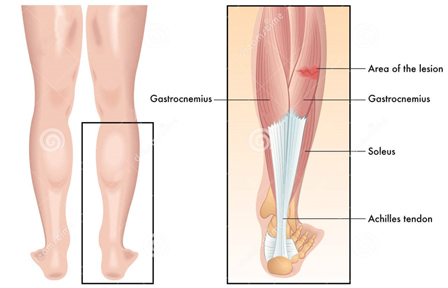


Figure 1: Calf muscles and common area of tear
Calf is the area of the body at the back of the leg from knee downwards up to the ankle. Calf is primarily made up of a bulky muscle called gastrocnemius, and the relatively small muscle called soleus. The ends of both the muscles converge to a flat tough band called Tendo Achilles which is attached to the heel. The main function of the calf muscles is to enable you to raise yourself on the toe tips. At the depth of these muscles there are further muscles which are responsible for moving the toes downwards to enable you to grip on the ground as you are standing or walking.
The common reasons for pain in the calf are muscle sprains or injuries, blood clotting in the veins called deep vein thrombosis, inflammation or rupture of the tendo achilles or neuropathic pain called claudication as already described in the back of thigh section.
Calf pain varies from person to person, but it typically feels like a dull, aching, or sharp pain, sometimes with tightness, in the back of the lower leg. Symptoms that might indicate a more severe condition include:
Muscle sprains are common and mostly due to sudden unaccustomed sports activity without appropriate warm up. Blood clots may happen as a result of injury, prolonged immobilisation of the leg, or remaining bedridden for long duration due to sickness etc. Rupture of the Achilles tendon can be sudden due to acute trauma, or may be a consequence of prolonged tendinitis of the Achilles tendon. Claudication as already mentioned can be due to poor blood supply of the muscles or entrapment of the nerves of the leg at its origin. People having chronically raised blood sugar slowly develop degeneration of the fine nerve endings causing a burning pain called neuralgia.
If happening for the first time in most situations home remedies will be sufficient. That includes a period of rest and refraining from the offending activity, application of ice pack 3 to 4 times daily, gentle massage 2 to 3 times daily and stretching of the muscles. A shoe heel raise by about 2 to 3 cm will be of benefit in most cases . You are always advised to seek opinion from a physiotherapist for the primary remedy. Pain killers just suppress the symptoms without addressing the appropriate cause which should be identified and treated for a permanent cure.
If this does not solve the problem it's better to see your doctor. Along with a detailed history and examination your doctor might ask for blood tests, imaging studies to look for any tear of the muscle fibres or the Achilles tendon. A minor tear of the muscle fibres will usually heel with non-operative treatment, but a rupture of the Achilles tendon will require surgery in most circumstances, for that you need to see a specialist.
Prevention: Here are a few tips that should help prevent calf pain:
You can obtain a bit more information about rupture of the Achilles tendon by clicking on the link below.